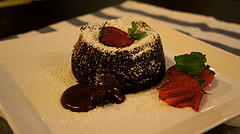People often do a bit more entertaining in the warmer months, so if you're planning on having a few friends over to enjoy the summer weather, you'll want to set out light, tasty snacks for them to enjoy. Here are just a few creative ideas for summertime snack trays that everyone will love.
- A variety of skewers. Stick a few tasty combinations of small skewers to give your guests a handheld snack. Try adding mozzarella, tomato and basil, or add a variety of summertime fruits to another. If you want to get creative, you can even add cake bites for a sweet treat.
- A fruit platter with dips. While many people think of vegetables when they think of dips, fruits are a bit more refreshing in the summertime. Make your own yogurt dip, add a bowl of peanut butter or even add melted chocolate for a fondue-style snack.
- Make a multi-layer taco dip. Layer ground beef, sour cream, shredded cheese, lettuce and tomato in a large bowl, and serve the dip with crunchy tortilla chips.
- Dress up your popcorn. Think popcorn is only reserved for movie nights? Think again! Add a zest of lemon, a bit of parsley and some fresh sea salt to your popcorn to give it a gourmet flavor that's anything but ordinary.
Easy Appetizers: 15 Summer Party Picks [Food.com]












 Equal Housing Opportunity
Equal Housing Opportunity